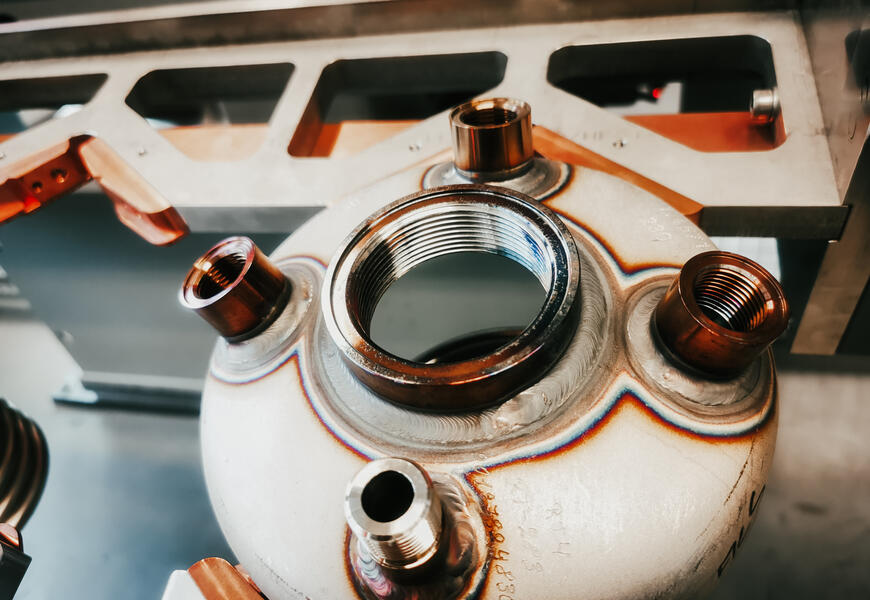Looking for the balance
"Our task is also to make an x-number of products per day. It's not about more pieces per day, but about flexibility. Does the operator have to be flexible or the robot? What does the welding robot deliver per hour per m2? In addition to the welding robot, can the operator also weld manually? Where is the balance? Those are the questions we asked ourselves within the concept of 'World Class Manufacturing'? We map out the 'losses' and work continuously on improving the production process.
To this end, we have set up a new cell where the CA drum is completely produced. In a 'one piece flow' concept, the work pieces are immediately taken over by the next production step, so there are no more waiting times. Because the employees do both the welding, as well as the balancing, weighing and disassembling, the complete part can go straight through to the final assembly". Advantages: less space required, fewer waiting times, more ergonomic and better balance because the operator of the welding robot in the meantime welds a part manually", explains the engineer.
MIS next step
"As part of rolling out Industrie 4.0 in the welding industry, we also want to have more control over the maintenance of the welding robots. To achieve this, we need to collect all the data so that you can visualize the state of the robots, both technically and in terms of performance. With Valk Welding's Management Information System (MIS) we can give substance to this. Step by step, we get more and more control over the production," according to colleagues Bart Dedeurwaerder and Geoffrey Geldhof.
CNH Industrial draws the map of automation. Witness to this is the purchase of 2 new robot cells, the first of which will be installed this year. The second cell is expected in February 2021. CNH Industrial is ready for the future and continues to invest.
www.cnhindustrial.com





